#Ancient Bristlecone Pine Forest
Photo


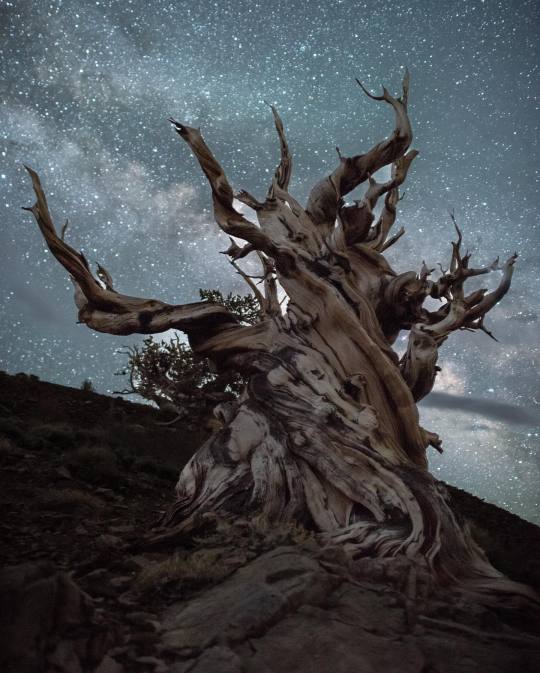
“ Ancient Bristlecone Pine “ // James Piper
358 notes
·
View notes
Text

Ancient
Bristlecone Pine Forest - near Bishop, CA
#photographers on tumblr#original photographers#ancient bristlecone pine forest#bishop#california#milky way#milkywayphotography#landscape#landscape photography#treescape#nightphotography#astrophotography#stars#star photography
194 notes
·
View notes
Video
Get Yourself to the Ancient Bristlecone Pine Forest by Mark Stevens
Via Flickr:
While walking the Discovery Trail and taking in views of the ancient bristlecone pines in this portion of the Schulman Grove and Inyo National Forest. The view is looking to the southwest with a distant view of the Sierra Nevada mountains.
#Ancient Bristlecone Pine Forest#Azimuth 201#Birch Mountain#Blue Skies#California and Oregon Road Trip#Central Sierra Nevada#Cloudripper#Day 2#Discovery Trail#DxO PhotoLab 5 Edited#Forest#Forest Landscape#Forest Mountain#Great Basin Bristlecone Pine#Great Basin Ranges#Hillside of Trees#Intermountain West#Inyo National Forest#Landscape#Landscape - Scenery#Looking SW#Methuselah#Methuselah Grove#Middle Palisade#Mount Agassiz#Mountain Peak#Mountains#Mountains in Distance#Mountains off in Distance#Mountainside
4 notes
·
View notes
Text
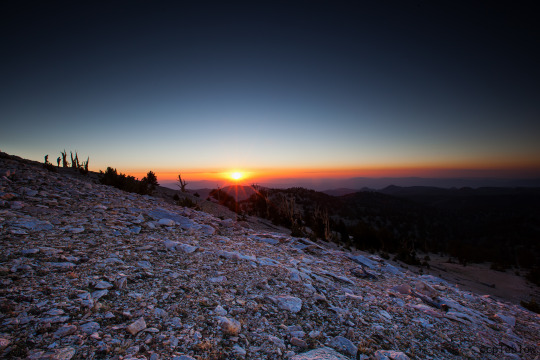
Sunrise at 11500 ft
©cpleblow (2022)
In the upper mid left of the frame there are two other photographers that I was unaware of in this shot. They are a little blurred due to the long exposure. At quick first glance, I thought they were Ancient Bristlecone Pines...
124 notes
·
View notes
Photo

The Oldest Living Things
Hikers in California’s Sierra Mountains are surprised to encounter 10-foot-high fences with barbed wire stretched around the top. What do they see inside the fence-surrounded enclosures? Some vital communication equipment like a radio tower? No, they see only a few gnarled trees, maybe just a twisted stump with a few needles.
A sign reads: DO NOT ENTER. BRISTLECONE PINE PROTECTION ZONE. PLEASE PROTECT THESE TREES. They are the oldest living things on earth.
Pamphlets explain that these bristlecone pines were flourishing when Jesus walked on earth, and that the oldest were seedlings at the time of the Exodus from Egypt.
Eventually, though, regardless of how carefully they are protected, those trees will die. They are not destined to live forever. But Christians have the certainty of everlasting life. To be sure, our bodies will die. Yet by God’s grace and power, our souls will never perish. Our bodies will be raised up and, as Paul said, be changed from mortal to immortal (1 Cor. 15:53).
We are awed by the longevity of the bristlecone pines. How much more awesome is eternal life through Christ. We who believe in Him will live forever!
We cry, “O God, how can it be?
How long is vast eternity?”
The answer rings from shore to shore,
“No end, eternal, evermore.”
—Anon.
Want to live forever? Let Jesus live in you now.
~ Our Daily Bread
8 notes
·
View notes
Text


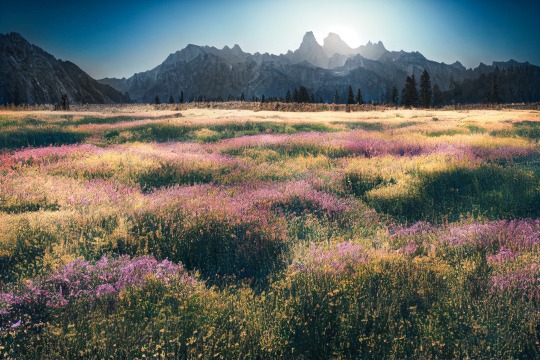
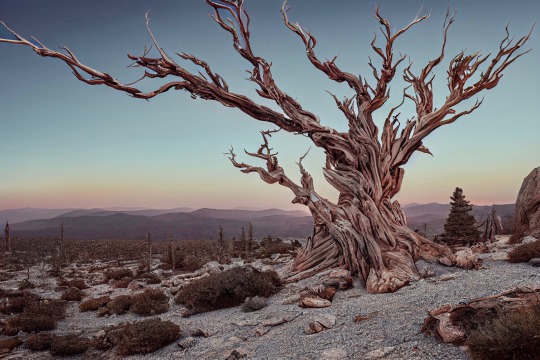

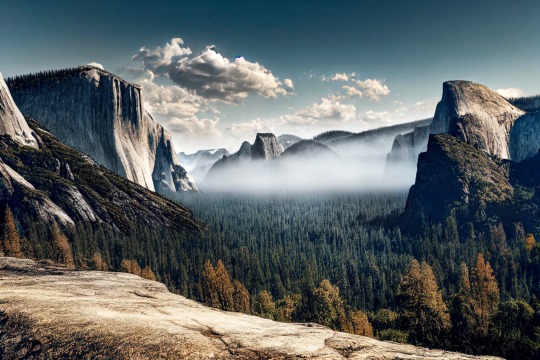




I took my first backpacking trip when I was ten.
An eastern approach to the Sierra Nevadas out of Independence, CA.
To me one of the finest road trips is the 600 miles drive from Hesperia to Alturas on U.S. Route 395.
All of these images where created using MidJourney artificial intelligence.
#nature#california#midjourney#midjourneyart#midjourney ai#sierra nevada mountains#eastern sierra#ancient bristlecone pine forest
7 notes
·
View notes
Text

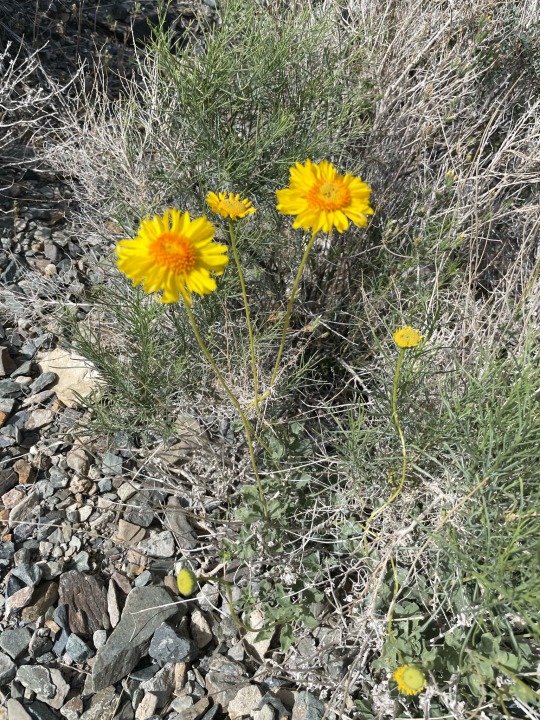


After a cup of coffee in camp, we walked 2 miles downhill to our car observing wildflowers and a horned lizard along the way.
We drove to the Ancient Bristlecone Pine Forest Visitors Center and did the Methuselah Trail, a 4.5 mile hiking loop through our planet’s oldest living organisms. Many of these gnarly trees are 4000-5000 years old.

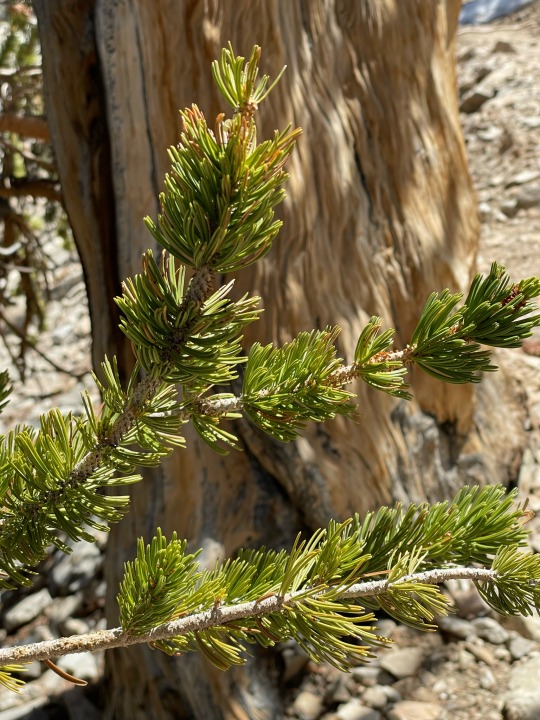


It was gusting wind, so we felt cold and hot while on the trail. The dry air and high elevation, 9000-10,000 feet made it more difficult. But the trees were truly magnificent.


#travelwithz#california#bishop#ancient bristlecone pine forest#trees#plants#biology#eastern Sierra Observatory#USA#2022
1 note
·
View note
Text


Ancient witness: bristlecone pine (Pinus longaeva) I & II
Ancient Bristlecone Pine Forest, White Mountains, California.
17 Nov 2019.
6 notes
·
View notes
Text

One of the Ancient Bristlecone Pine Trees in Inyo National Forest, White Mountains, California. These trees are 4,000 years old.
79 notes
·
View notes
Photo

Milky Way, Ancient Bristlecone Pine Forest in California (1638x2408)(OC)
12 notes
·
View notes
Photo

Methuselah (germinated ca. 2830 BC)

Methuselah is located between 2,900 and 3,000 m (9,500 and 9,800 ft) above sea level in the "Methuselah Grove" in the Ancient Bristlecone Pine Forest within the Inyo National Forest, California. Its exact location is secret.
Photograph: Piriya Photography/Getty Images
According to research released last week, this ancient bristlecone pine will be 4,851 years old this year (2020)
https://www.theguardian.com/environment/2020/aug/02/the-methuselah-tree-and-the-secrets-of-earths-oldest-organisms
13 notes
·
View notes
Text
Vagabonding as a Spiritual Path

The natural world is my muse and sanctuary -- a place for refuge and discovery. My most memorable moments have been in the outdoors. I have hiked thousands of miles of trails through forests, deserts and mountains. Having spent much of my life traveling and trekking, I still crave adventure and new experiences. Vagabonding or nomadic wandering is a unique way of living, a spiritual path to authenticity, self-awareness and solitude. Solitude allows time for self-examination, relaxation away from urban stress, and a chance to meditate, contemplate, or just zone out for hours at a time. Many of my most memorable experiences took place during solo journeys into Nature. The longer the solo immersion, the more transformational the experience.
In October 2011, I felt Spirit calling me. I felt compelled to travel to the sacred sites and power places that beckoned me. I followed my intuition and deepest instincts. I traveled with my drum and medicine bundle to shamanize the meridian system of Mother Earth's numinous web, which is the planetary counterpart to the acupuncture meridian system of the human body. At the intersection points of the planet's energy web exist holy places, power spots, or acupuncture points. Like acupuncture needles, humans are capable of maintaining the harmonious flow of the planetary energy meridians by making an Earth connection at power places.
Many magical things happened during my two month pilgrimage. I camped at Panther Meadows on Mount Shasta. I hiked among the oldest living things on the Earth in the Ancient Bristlecone Pine Forest. I soaked in the healing waters of Umpqua, Buckeye, Travertine, Whitmore, and Keough Hot Springs. Indigenous people worldwide believe that where fire and water mix at a hot spring is a sacred place. A water deity, usually a goddess, resides in each spring. People make pilgrimages to thermal springs to connect with the goddess and to supplicate the benefits of her healing graces. The sacred ambience of the place, its geothermal energy and the pilgrim's relationship to it, is sufficient to fulfill the pilgrim's aspirations.
I ventured south through California and explored the Owens Valley area on the east side of the Sierra Nevada crest. Before returning home in early December, I planned a four day desert exploration. On day one, I visited the Sleeping Lizard, which is an ancient vision quest site located in the Volcanic Tablelands north of Bishop. This site is sacred to the Owens Valley Paiute people, who use alcoves in the rock for vision quests. I took a journey back in time to visit the ancient ones who etched petroglyphs in the volcanic rock.
Next, I drove up the Whitney Portal Road towards the trailhead that hikers climb up to Mount Whitney. Unfortunately the road to the trailhead was closed for the winter. I backtracked down the road and camped in the Alabama Hills, located in the shadow of Mount Whitney just west of Lone Pine. The rounded weathered contours of the reddish-orange foothills contrast with the sharp ridges of the Sierra Nevada to the west. Throughout the last century, the Alabama Hills have appeared in hundreds of films and commercials. During my visit, a Quintin Tarantino project (Django Unchained) was being shot there.
In one day I drove from Mount Whitney (the sacred masculine), the tallest mountain in the continuous 48 states, into Death Valley (the sacred feminine), the lowest elevation in North America. Shortly after entering Death Valley National Park, I took an eight-mile detour north along the Saline Valley Road to visit a Joshua Tree forest at Lee Flat. The Saline Valley Road is very rough and progress was slow, but I eventually reached the magical forest. A cold wind buffeted me each time I left the confines of my truck to hike and photograph the forest. I would have camped here for the night if not for the high elevation and bitter cold wind. I camped instead at Panamint Springs Resort, 22 miles inside the western border of Death Valley National Park.
The following day, I explored Darwin Falls and the remote Panamint Valley adjacent to Death Valley. I camped for the next few days at the far northeast end of the South Panamint Dry Lake, a small wetland, grassland, dune system and mesquite bosque. The warm sulfur springs of this desert oasis provide habitat for frogs, shore birds, marsh hawks, and wild burros. A short-eared owl visited my campsite each evening at dusk. The stars bathed the cold desert in a warm glow. Few things are more serene than the deep stillness of the desert on a starry night. In that stillness, I am reborn, forever changed.
Oh, how I love vagabonding. Shamanism is deeply rooted in Nature and a nomadic lifestyle. The emphasis is on the individual, of breaking free and discovering one's own uniqueness in order to bring something new back to the group. Like drumming, nomadic wandering alters your ordinary everyday awareness. It is another means of habitual pattern disruption for reimprinting on alternate realties. When you leave home, meet new people, experience new stimuli, and process new information, you're soon intoxicated on a natural high. As Ed Buryn, the godfather of modern vagabonding puts it, "Vagabonding is nothing less than reality transformation, and its power is not to be underestimated."
7 notes
·
View notes
Video
Get Yourself to the Ancient Bristlecone Pine Forest by Mark Stevens
Via Flickr:
While walking the Discovery Trail and taking in views of the ancient bristlecone pines in this portion of the Schulman Grove and Inyo National Forest. The view is looking to the southwest with a distant view of the Sierra Nevada mountains.
#Ancient Bristlecone Pine Forest#Azimuth 201#Birch Mountain#Blue Skies#California and Oregon Road Trip#Central Sierra Nevada#Cloudripper#Day 2#Discovery Trail#DxO PhotoLab 5 Edited#Forest#Forest Landscape#Forest Mountain#Great Basin Bristlecone Pine#Great Basin Ranges#Hillside of Trees#Intermountain West#Inyo National Forest#Landscape#Landscape - Scenery#Looking SW#Methuselah#Methuselah Grove#Middle Palisade#Mount Agassiz#Mountain Peak#Mountains#Mountains in Distance#Mountains off in Distance#Mountainside
4 notes
·
View notes
Photo

Unexpected in the desert! We encountered this PLANE in the middle of the desert that has a DJ booth in the cockpit! We also went to Ancient Bristlecone Pine Forest. https://www.instagram.com/p/ChoHnbUOpCE/?igshid=NGJjMDIxMWI=
2 notes
·
View notes
Text
Trees that have been standing for hundreds or thousands of years are entitled to special treatment – just like precious buildings

Efforts to increase the level of protection available to ancient – or simply old – trees in the UK have been building for some time. In 2019, Janis Fry, an artist and yew expert living in Wales, launched a petition calling for new laws that would prevent the destruction of about 157 ancient yew trees at least 2,000 years old. Since then, the chorus of disapproval about current provision has grown steadily louder (if not exactly deafening: tree enthusiasts not generally being the noisiest protesters).
The launch of the Woodland Trust’s Tree of the Year competition this week – in which five venerable oaks dominate a shortlist of 12 – offers another chance to focus minds. The wider problem goes beyond the lack of protection for individual trees, and includes issues relating to the conservation of nature more broadly. While tree cover in the UK is increasing, woodland wildlife is not, and more diverse planting, including a larger proportion of native species, is needed if that is to change. The consensus among experts and charities such as the trust is that government proposals recently sent out for consultation did not go far enough. Pressure must be applied to ensure that existing protections are not only maintained but strengthened as the risks from unchecked global heating and fossil fuel production continue to increase.
How old a tree needs to be to qualify as “ancient” depends on the species. Along with yews, traditionally planted in churchyards, where many of the oldest and most famous survivors can be found, oaks make up most of the UK’s outstanding examples. Although an estimated 1,000 years old, Lincolnshire’s Bowthorpe Oak is less than half the age of the Fortingall Yew in Perthshire, which is thought to be between 2,000 and 3,000 years old.
Old age is only one measure of a tree’s importance. But longevity is a characteristic that resonates with people – and can also entice them as visitors, making ancient trees attractive to tourist boards. The identity of the most ancient tree of all is disputed. The bristlecone pine, which grows in remote areas of the US west, was long thought to have the longest lifespan, of close to 5,000 years, but recently researchers have claimed that the Patagonian cypress could surpass it.
Recent studies of forest ecology have also looked at the role played by underground networks of roots and fungi. Scientists now stress the ecological importance of what they call “large old trees” – a broader category than ancient ones. One of the challenges in the UK is making tree conservation a live domestic issue, when forest campaigning was for a long time associated with the tropics. Increasingly, what used to be described as “Atlantic woodland” is instead being called temperate rainforest – a name change that seems likely to help.
With just 16% of ancient woodland in England currently designated as a site of special scientific interest, and a new study suggesting that there could be around 2m ancient or veteran trees, at least it is not hard to find room for improvement. Italy recently passed a law granting 20,000 trees legal protection as natural monuments. The UK should follow suit, by providing specific protections for the trees deemed most valuable due to their great age or other significance. Such recognition is long overdue, and would form part of the wider struggle to help the natural world recover.
1 note
·
View note
Text
Introduction to National Travel Destinations
Welcome, fellow travelers and adventure seekers! Get ready to embark on a journey through the breathtaking beauty of America’s National Travel Destinations. From majestic mountains to stunning coastlines, the United States is home to an array of awe-inspiring landscapes just waiting to be explored. Join us as we uncover the top must-visit national parks, discover hidden gems off the beaten path, and share insider tips for planning a memorable national travel experience. So pack your bags, fuel up your sense of wanderlust, and let’s dive into this ultimate guide to exploring the beauty of America!
The Top 5 Must-Visit National Travels in America
America is a haven for nature lovers, boasting some of the most breathtaking national parks in the world. From rugged mountains to lush forests and stunning canyons, there’s something for every outdoor enthusiast.
One must-visit national park is Yellowstone, known for its geothermal wonders like Old Faithful and diverse wildlife such as bison and grizzly bears. The Grand Canyon in Arizona is another iconic destination with its awe-inspiring vistas carved by the Colorado River over millions of years.
For those seeking adventure, Yosemite in California offers towering granite cliffs, majestic waterfalls, and ancient sequoia trees. Acadia National Park in Maine charms visitors with rugged coastlines, rocky beaches, and picturesque lighthouses.
Last but not least, Zion National Park in Utah captivates with its red rock formations, narrow slot canyons, and scenic hikes that lead to panoramic views. These top five national parks are just a glimpse of the natural beauty waiting to be explored across America.
Hidden Gems: Lesser-Known National Travels Destinations
Are you tired of the usual crowded tourist spots and looking for a more off-the-beaten-path adventure? Look no further than these lesser-known national travel destinations that are sure to surprise and delight you.
Ever heard of Great Basin National Park in Nevada? This hidden gem boasts ancient bristlecone pine trees, stunning alpine lakes, and the mysterious Lehman Caves. It’s a paradise for hikers and stargazers alike.
If you’re a fan of marine life, consider visiting Channel Islands National Park in California. Just off the coast of Santa Barbara, this park is home to diverse wildlife including seals, dolphins, and seabirds. Explore sea caves or go kayaking through crystal-clear waters for an unforgettable experience.
For history buffs, check out Capulin Volcano National Monument in New Mexico. Hike to the top of this dormant volcano for panoramic views stretching into three states. It’s a unique geological wonder waiting to be discovered.
These hidden gems offer a different perspective on America’s natural beauty – are you ready to explore them?
Planning Your Trip: Tips and Tricks for a Successful National Travels Experience
Planning your national travel adventure can be both exciting and overwhelming. Start by researching the top national parks you want to visit and create a flexible itinerary. Consider factors like weather, peak seasons, and park regulations when planning your trip.
Make sure to book accommodations in advance, especially if you’re visiting popular destinations. Look for lodging options inside or near the national parks for convenience. Pack essentials such as comfortable shoes, water bottles, snacks, sunscreen, and insect repellent.
Check for any road closures or construction projects that may affect your route. It’s also essential to familiarize yourself with park rules regarding wildlife interaction and waste disposal. Consider joining guided tours or hiking groups for a more immersive experience.
Don’t forget to prioritize safety during your travels by staying on marked trails, following park guidelines, and being aware of your surroundings at all times. With proper planning and preparation, you’ll have a memorable and successful national travel experience ahead!
Choosing the Right Accommodations for Your National Travel Adventure
When embarking on a national travel adventure, choosing the right accommodations is key to enhancing your overall experience. Whether you prefer camping under the stars or staying in cozy cabins, there are plenty of options to suit every traveler’s needs.
For nature enthusiasts, camping in national parks offers a unique opportunity to immerse yourself in the great outdoors. Wake up to breathtaking views and enjoy activities like hiking and stargazing just steps away from your tent.
If you prefer more comfort, consider booking a stay at one of the lodges or resorts located within or near national parks. Enjoy modern amenities while still being surrounded by stunning natural landscapes.
For those seeking a mix of convenience and adventure, renting an RV can provide both flexibility and comfort during your travels. Experience the freedom of exploring multiple national destinations at your own pace.
No matter what type of accommodation you choose, be sure to book well in advance especially during peak travel seasons. Research different options based on location, budget, and amenities to find the perfect place to rest after a day of exploration.
Table of Contents
Introduction to National Travel Destinations
The Top 5 Must-Visit National Travels in America
Hidden Gems: Lesser-Known National Travels Destinations
Planning Your Trip: Tips and Tricks for a Successful National Travels Experience
Choosing the Right Accommodations for Your National Travel Adventure
6-Budget-Friendly Options for Exploring National Travels Destinations
6-Budget-Friendly Options for Exploring National Travels Destinations
When it comes to exploring national travel destinations, you don’t have to break the bank. There are plenty of budget-friendly options that allow you to experience the beauty of America without emptying your wallet.
One way to save money on your trip is by opting for camping instead of expensive hotels. Many national parks offer campgrounds with stunning views and affordable rates. Plus, sleeping under the stars can be a magical experience in itself.
Another cost-effective option is to pack your own meals and snacks for the trip. Bringing along a cooler filled with sandwiches, fruits, and drinks can help you avoid pricey restaurant bills while still enjoying delicious food during your adventures.
Consider visiting national parks during off-peak seasons or weekdays when entrance fees are typically lower. You’ll also encounter fewer crowds, allowing for a more peaceful and intimate connection with nature.
Exploring nearby attractions or hiking trails outside of popular tourist spots can provide equally breathtaking views without the hefty price tag. Don’t be afraid to veer off the beaten path and discover hidden gems that won’t drain your savings account.
By being strategic about where you stay, what you eat, when you visit, and which activities you choose, exploring national travel destinations on a budget is not only possible but also incredibly rewarding.
When visiting national parks and landmarks, always remember to respect the environment and wildlife. Follow all posted rules and regulations to ensure the preservation of these beautiful places for future generations. Keep a safe distance from wildlife, stay on designated trails, and pack out all your trash.
Additionally, be mindful of other visitors by keeping noise levels down and not disrupting the natural habitat. Practice Leave No Trace principles by leaving nature as you found it. And most importantly, enjoy every moment of your national travel experience while being a responsible traveler.
With proper planning, an adventurous spirit, and a respectful attitude towards nature, exploring America’s national travel destinations can be an unforgettable journey filled with breathtaking sights and memorable experiences. So go out there, explore the beauty that this country has to offer, and create lasting memories that will stay with you forever.
0 notes